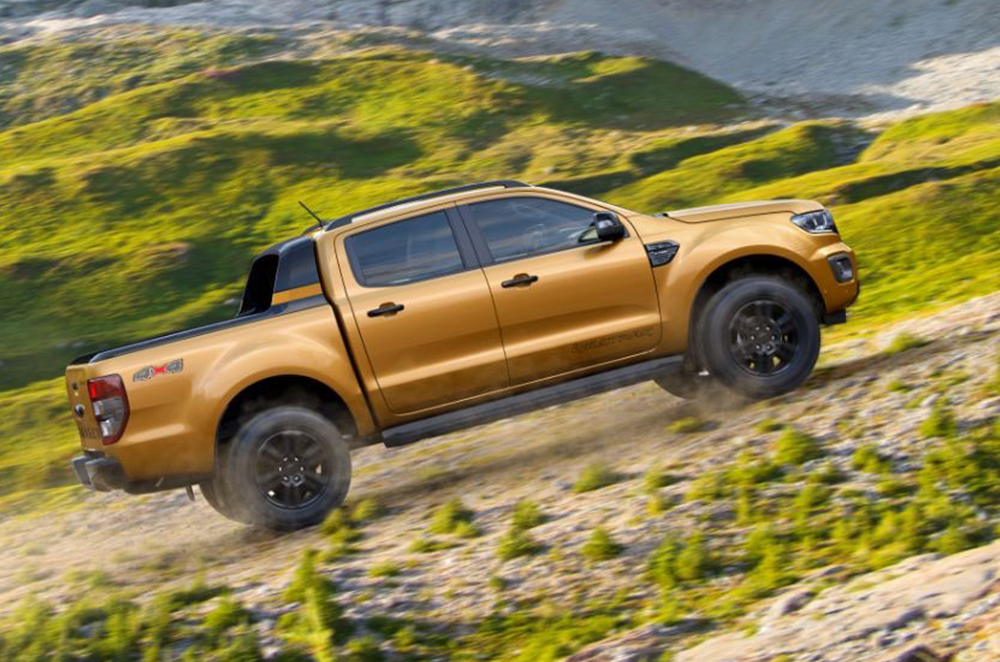
Ford Philippines knows that the increase in fuel prices has greatly affected the Filipino motorist. With that in mind, the Blue Oval has created a shortlist of tips to help you make the most out of your fuel, especially during these trying times. That said, here are tips from Ford Philippines that can help you maximize your fuel economy.
Choose a fuel-efficient engine
Your fuel efficiency journey starts by picking the right car for the job. If you want to maximize your fuel economy, then picking a frugal vehicle should be your first step. As Ford states, the Ranger and the Everest are great choices if you are looking for a pickup truck or an SUV as your next vehicle as they were designed and developed to deliver a mix of performance and efficiency.
Weight is your enemy
If your vehicle is modified and comes with accessories such as extra off-road equipment, driving lights, etc. It is best to remove this equipment as it just adds more weight to your vehicle. It can be tempting to keep everything on but reducing the contents of your vehicle by as little as 45kg could result in fuel economy improvement of up to four percent.
Drive sensibly
Aggressive acceleration and braking can increase your fuel consumption by up to 30 percent. What you want to do is accelerate gently and then once you’re at a steady speed, maintain driving within the local speed limit while you’re scanning the road ahead. If you spot traffic up ahead you can lift off the throttle much earlier to reduce your speed gradually and to keep up your moment in case it starts moving. Remember the less time you spend on the accelerator the better it is for your fuel economy.
Speed matters
It’s simple: The faster you go, the more fuel you’ll use. Up to around 80 km/h, the energy required to overcome wind resistance on a vehicle is minimal (though is greater than overcoming rolling resistance). Push beyond that, however, and drag increases exponentially. By driving 90 km/h instead of 100 km/h, for instance, you could improve your fuel economy by up to 15 percent.
Your tires matter
Ensure your vehicle’s tires are inflated as per the manufacturer’s recommendation (usually on a placard on a door jamb – or in your owner’s manual). The importance of properly inflated tires goes beyond just reducing rolling resistance and improving fuel efficiency; it’s also about vehicle safety. If you over-inflate your tires you could run the risk of reduced grip and increased tire wear. Conversely, if you under-inflated your tires your car will end up working harder to travel at the same speed.
Hot weather
Hotter weather helps your vehicle’s engine reach its optimum operating temperature much faster. But switching on the air-conditioning can place strain on the engine which will see an increase in fuel consumption. Indeed, on shorter trips in really hot weather, running the air-con can increase fuel consumption by up to 25 percent. If you want extra help in cooling your car’s cabin without using the airconditioning system then you can consider opening up the windows to help bring cool fresh air into your cabin. Doing this initially especially if your car has been parked for a long time can also help cool it faster by giving the hot air a path out of your vehicle.
Combine your trips
How many times have you run to the shops or the local hardware store, got back home, and then realized you need to go back because you forgot something? All of those little trips will see you use more fuel than a longer drive at a consistent speed. So, make a list of all the things you need to get and tick them off as you go.
Latest News
-
Hyundai confirms the IONIQ 6 N Launch — Should we expect it in PH? / News
The IONIQ 6 N is coming this July, and Hyundai seems to be leaving its old spoiler behind. With the all-new rear design, the performance sedan could look sleeker than before.
-
Hyundai brings back free roadside help this holy week / News
Hyundai Motor Philippines will once again offer roadside help to travelers during Holy Week. This year marks the third time the program is being done, with select dealers ready to assist on...
-
Ford Philippines is offering a three-year free scheduled service package on their best-selling vehicles this month. / News
Thinking of owning a Ford? Ford Philippines now offers a free three-year Scheduled Service Plan (SSP) on select models.
Popular Articles
-
Cheapest cars under P700,000 in the Philippines
Jerome Tresvalles · Sep 02, 2024
-
First car or next car, the Ford EcoSport is a tough package to beat
Jun 18, 2021
-
Car Maintenance checklist and guide – here’s everything you need to know
Earl Lee · Jan 12, 2021
-
Most fuel efficient family cars in the Philippines
Bryan Aaron Rivera · Nov 27, 2020
-
2021 Geely Okavango — Everything you need to know
Joey Deriquito · Nov 19, 2020
-
Family cars in the Philippines with the biggest trunks
Sep 20, 2023
-
Head to head: Toyota Rush vs. Suzuki XL7
Joey Deriquito · Oct 28, 2020
-
Why oil changes are important for your car
Earl Lee · Nov 10, 2020
-
2021 Kia Stonic — What you need to know about it
Joey Deriquito · Oct 16, 2020
-
Top 7 tips for buying a used car in the Philippines
Joey Deriquito · Nov 26, 2020



